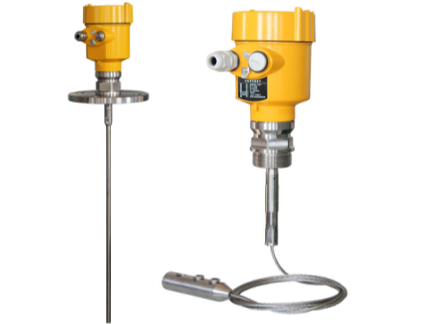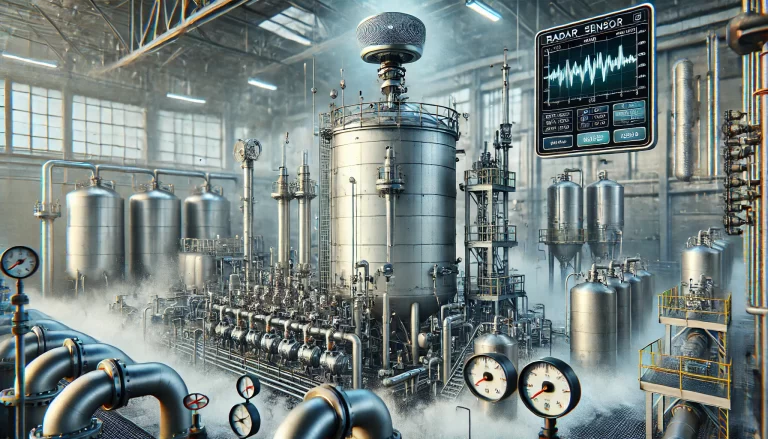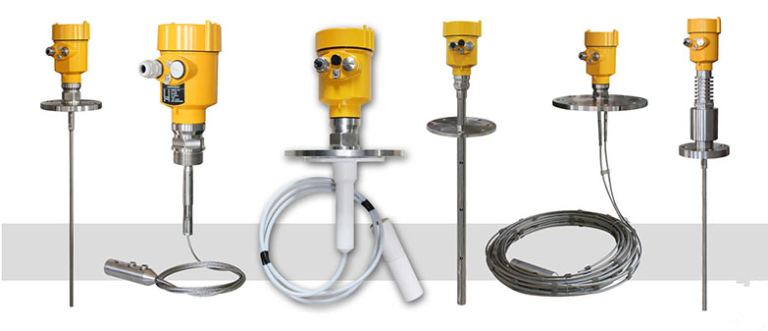In industrial fields such as chemical and petrochemical industries, distillation columns are common separation equipment used to separate components in mixtures based on differences in boiling points or vapor pressure. The efficient operation of distillation columns relies on precise control of the liquid level within the column, as the accuracy of liquid level measurement directly affects product quality and production efficiency. This article will explore the application and advantages of guided wave radar level meters in liquid level measurement of distillation columns.

A guided wave radar level meter is an instrument for liquid level measurement based on the principle of time-domain reflectometry. Its working principle involves emitting electromagnetic pulses that travel along a probe or cable. When these pulses encounter the surface of the medium being measured, part of the pulse is reflected back to the transmitter, forming an echo. By calculating the time difference between the transmitted pulse and the received echo, the liquid level height can be determined. This method of measurement is characterized by high precision and reliability, unaffected by changes in the medium, temperature, inert gases, steam, dust, foam, and other factors.

The advantages of guided wave radar level meters in distillation column measurements include:
- High Precision: The guided wave radar level meter has high measurement accuracy, meeting the stringent requirements for liquid level control in distillation columns.
- High Reliability: Since its measurement principle is not dependent on the physical properties of the medium, it can maintain stable performance even in harsh environments, such as high temperatures, high pressure, and strong corrosiveness.
- Strong Resistance to Adhesion: In distillation columns, materials often have high viscosity and volatility, leading to adhesion issues. The guided wave radar level meter uses a single-rod probe with an anti-adhesion design to minimize the impact of adhesion on measurements.
- Strong Adaptability: The guided wave radar level meter can measure various types of liquids, including corrosive and viscous liquids, making it suitable for different types of containers and working conditions.

For example, in a chemical plant’s de-ethanizer column, where the operating temperature reaches 260–400°C and the pressure ranges from +0.5 to 3 bar, the traditional level measuring instruments often fail to meet the requirements. The use of a guided wave radar level meter effectively solved the issues of high temperature, high pressure, and adhesion, achieving stable and reliable level measurement. Additionally, the level meter is equipped with comprehensive diagnostic functions, allowing for timely detection and resolution of potential faults, thus enhancing the safety and reliability of equipment operation.
The guided wave radar level meter has significant advantages and application value in liquid level measurement of distillation columns. Its characteristics of high precision, reliability, strong resistance to adhesion, low maintenance requirements, and strong adaptability make it an ideal choice for liquid level control in distillation columns.
